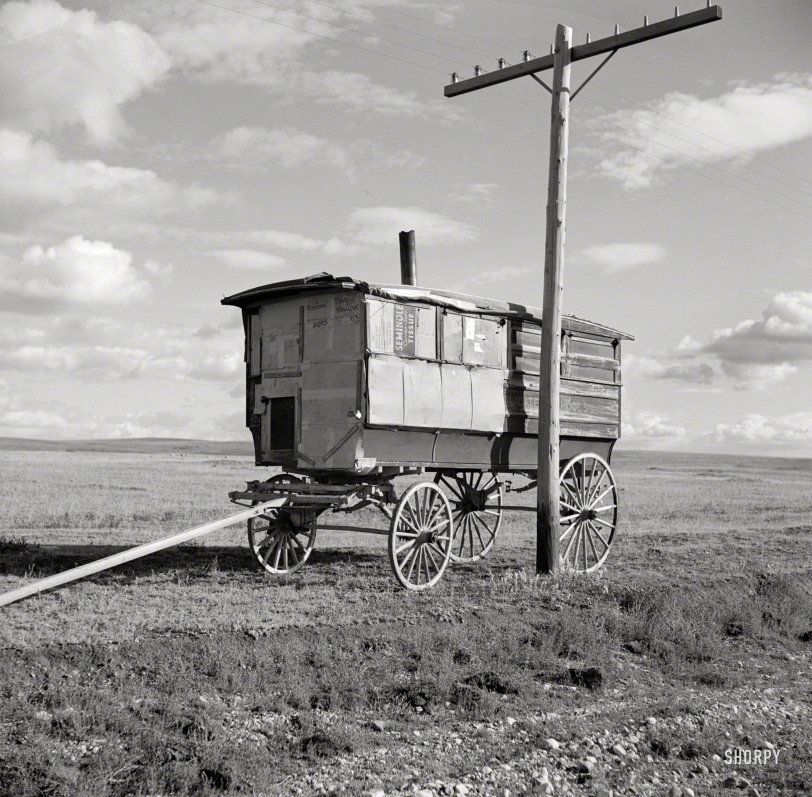


Framed or unframed, desk size to sofa size, printed by us in Arizona and Alabama since 2007. Explore now.
Shorpy is funded by you. Patreon contributors get an ad-free experience.
Learn more.

- Lost in Toyland
- And without gloves
- If I were a blindfolded time traveler
- Smoke Consumer Also Cooks
- Oh that stove!
- Possibly still there?
- What?!?
- $100 Reward
- Freeze Frame
- Texas Flyer wanted
- Just a Year Too Soon
- WWII -- Replacing men with women at the railroad crossing.
- Yes, Icing
- You kids drive me nuts!
- NOT An Easy Job
- I wonder
- Just add window boxes
- Icing Platform?
- Indiana Harbor Belt abides
- Freezing haze
- Corrections (for those who care)
- C&NW at Nelson
- Fallen Flags
- A dangerous job made worse
- Water Stop
- Passenger trains have right of way over freights?
- Coal
- Never ceases to amaze me.
- Still chuggin' (in model form)
- Great shot
Print Emporium
The Old Bus: 1937

October 1937. "Old school bus. Williams County, North Dakota." Medium-format negative by Russell Lee for the Farm Security Administration. View full size.
Court decision
Well, one thing we know is that the driver didn't get paid when schools were closed by a flu epidemic.
School's Wagon
No question about it that this passenger wagon was owned by a school district. But I have to wonder if our concept of a school bus (stops in a string of places and takes groups of waiting children who live too far to walk, to their school) even existed in the horse drawn days.
I have seen some pretty quick Amish horse carts trotting down the road (with retired race horses pulling them) in Indiana. But even so, those kids would have to get up pretty early in the morning if this thing went from one rural driveway to another, pulled only by a horse.
Grand old lady of a bus
If you look carefully you can see the faded label that clearly says in part __HOOLS. No doubt the county school system. But the windows aren't boarded up at all, looks like. Those boarded sides have hinges at the top, by the roof. The label was painted on those boards, so likely that's how the bus was when it was used. Probably the hinged sides could be propped open in warm weather. It is actually papered over outside with cardboard from boxes (half of the door covered over), probably to keep out the cold prairie winds. And yeah, I'd bet didn't have a stove or a pipe.
Thanks for a look at a vehicle I'd never heard of--a horse-drawn schoolbus.
Very ingenious
I wonder if it was painted yellow...
Looks like it was converted to a small dwelling of sorts (I doubt that chimney was part of the standard equipment offered in the Studebaker Brothers brochure of the early 1900s).
I can see the windows were boarded up, but, with some imagination, you can see the general arrangement it once had: a long horse drawn wagon very similar to the classic Conestogas, but with flat sides and a roof. Probably it had a few seats, and no window glass at all. By the way, that would have been a very good antecedent for the original wood-bodied "station wagons". Ingenious, simple, practical, and an use for a horse drawn carriage I never imagined.
























On Shorpy:
Today’s Top 5